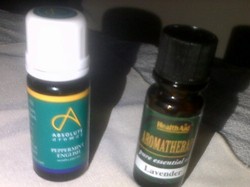In the early 1980s, PRK--Photorefractive keratectomy--was developed. Prior to the Lasik being developed, PRK was the most frequently performed refractive surgery. Although there has been a decline in the popularity of Photorefractive keratectomy has since the introduction of Lasik, it is still popular and used often those who do not qualify for LASIK. Anyone who is thinking about having any type of laser eye surgery may wish to consider earning more about the benefits of PRK.

About PRK Eye Surgery
by CRfan
PRK was the precursor to modern LASIK procedures. It is still performed and is a better option for certain people.
Performed Long Before the FDA Approval
The U.S. Food and Drug Administration first approved PRK laser surgery in 1995; however, the procedure had been performed outside the United States on a regular basis. Those living in America soon discovered this and crossed the border into Canada to have the procedure before it was made available in the United States. The surgery utilizes an excimer laser, which transmits an ultraviolet light in the form of a cool beam that removes tiny tissue particles from the surface of the cornea. This reshapes the area but does not create a corneal flap.
Cornea Shaping With an Excimer Laser
Near-sighted patients have corneas that are too steep and have too much power, PRK flattens this part of the eye. Similarly farsighted patients have flat corneas, therefore the surgery steepens that area of the eye. Excimer laser can also correct astigmatisms, and during this process the irregular cornea is smoothed out to create a normal shape. Regardless of the vision problem, this procedure enables the cornea to precisely focus light into the retina of the eye, which ultimately leads to improved vision.
After The Surgery
After the surgery, a bandage contact lens is used to cover the cornea. After 2-3 days, new epithelial cell growth begins and the cover can then be removed. No corneal flap is made during this procedure so there are no complications or risks in that regard. It is for this reason this surgery is popular with who who engage in activities that could potentially result in injuries to the eye, such as boxers or martial artists. In addition, those who do not qualify for LASIK surgery because their corneas are too thin, can opt for PRK instead.
Both PRK and LASIK affect the strength of the cornea. PRK is associated with more discomfort than Lasik, as well as and a longer visual recovery period. This is because the epithelium, the top layer of the cornea which is full of nerve endings is removed. Right after having a PRK procedure patients also have a greater risk for eye infection risk or permanent or temporary haziness of the cornea.
Standard in the Military
PRK has been performed for many years on those in the military. The United States Army, Navy, Marines and Air Force grants waivers for those who have had PRK surgery. Those who have had the procedure may also be waived for a Military Free Fall course, Special Forces Qualification and Combat Diving Qualification. The Navy has even begun providing complimentary Photorefractive keratectomy surgery to Naval Academy midshipmen.
You might also like
Anosmia - Can it be reversed ?Anosmia- loss of the sense of smell is one of the first signs of Parkinson's ...
Tudor remedies and cosmeticsYesterday I visited a Medieval Hall for a Tudor medicine and cosmetics talk. ...



 How The FDA Approves New Medicineson 08/16/2013
How The FDA Approves New Medicineson 08/16/2013
 10 Tax Mistakes Business Owners Makeon 08/05/2013
10 Tax Mistakes Business Owners Makeon 08/05/2013
 Accessories For Traveling With Jeweleryon 02/12/2013
Accessories For Traveling With Jeweleryon 02/12/2013
 Stages of the Sleep Cycleon 09/23/2012
Stages of the Sleep Cycleon 09/23/2012


Comments